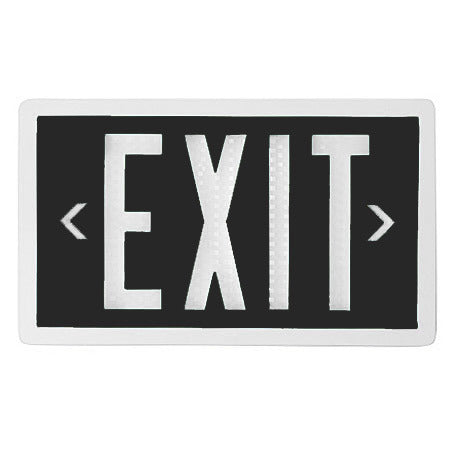Tritium Exit Signs – Self‑Luminous
Tritium exit signs (self-luminous) deliver reliable, always-on visibility with no electricity, wiring, or batteries. They’re part of our
Exit Signs lineup and the
non-electrical exit signs family—ideal for stairwells, remote corridors, and locations where power access is limited. Prefer a glow-charge option? Compare
photoluminescent exit signs.
UL 924 Listed
NFPA 101 Compliant
OSHA Approved
USNRC Compliant
ISO 9001 Certified
Quick Fulfillment
Buyers Guide Tips
What to Look for in Tritium (Self-Luminous) Exit Signs
-
Compliance & acceptance: UL 924 listed; confirm AHJ acceptance of self-luminous devices and required safety markings/labels on the sign.
-
Lifespan & brightness: Choose 10/20-year models; verify initial luminance and that end-of-life brightness still meets visibility requirements.
-
No-power operation: Self-luminous—no wiring, batteries, or charging light required; ideal for off-grid or hard-to-wire locations and sealed enclosures.
-
Legend visibility: Red or green letters with uniform illumination; confirm character height and viewing distance (e.g., 6" letters commonly specified to ~100 ft, model-dependent).
-
Faces & chevrons: Single/double-face options; use field-selectable arrows to match actual egress paths and minimize SKU proliferation across floors/zones.
-
Housing & environment: Select thermoplastic, aluminum, or FRP enclosures; consider damp/wet or enclosure ratings (NEMA/IP), UV stability, and impact resistance where needed.
-
Mounting & clearances: Wall/ceiling/end mounting with proper canopy/plate; verify projection, headroom, and label visibility after installation.
-
Markings & records: Ensure permanent expiration/date labels and radiation caution markings; maintain inventory/logs for inspections and audits.
-
End-of-life plan: Establish a return/recycling process ahead of expiration; follow chain-of-custody and packaging requirements for compliant handling.
Perfect for stairwells, tunnels, mechanical rooms, or outdoor enclosures with little to no ambient light, each tritium emergency exit sign is UL 924 listed and NFPA 101 compliant when installed according to code. They’re ideal for off-grid exit sign applications or locations where wiring isn't feasible.
Tritium exit signs are maintenance-free throughout their rated lifespan and include expiration labeling for regulatory compliance. Looking for alternatives for well-lit areas? Check out our photoluminescent exit signs—another no-power emergency sign solution.
When your unit expires, we offer Tritium Exit Sign disposal and recycling services to ensure safe, compliant return.
 Sale
Sale Sale
Sale Sale
Sale






